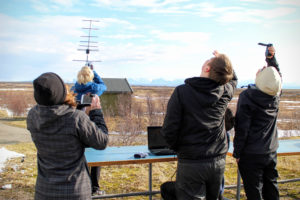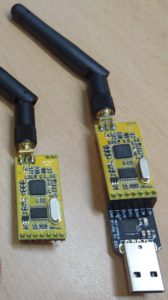Introduction

Telemetry is a technology that allows transmission of data from remote measurement devices. It is derived from the Greek words “tele”, meaning remote, and “metron”, meaning measure. Telemetry is an essential part of rocketry and satellite technology. Information is transmitted wirelessly using radio waves. On the ground these signals are collected by radio receivers. Large space agencies have networks of these ground stations stretching all over the globe, tracking, monitoring and receiving telemetry from their satellites.
Telemetry data can be divided into two groups: data from internal sources and data from external sources. Rockets and satellites are equipped with countless sensors that measure internal parameters. The measurements they take may relate to temperature, pressure, attitude, power usage, and a wide variety of other measurements. The information from these sensors is called “housekeeping data”. This is used to monitor the satellites health, and is necessary for the operation of the system.
Information from the external sources is mostly what interest scientists. This is the data collected from the payload. The payload of a research satellite typically takes the
form of sensors or other equipment which measures and generates data about our planet, the space environment, the sun, the stars, or any number of other things depending on the mission. This information is called the “mission data” or “scientific data”. In your CanSat this would be the information from the sensor board. This data is sent to a ground station to be studied by scientists.
CanSat telemetry operations can be broken down into three distinct components: transmitting data, receiving data, and processing data.
The transmitter board inside the CanSat collects information and transmits it as a radio signal.
This signal is received by the ground station and sent to a laptop, where it is stored before being processed as experimental data.

